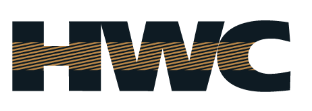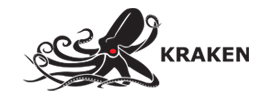These Best Penny Stocks Could Deliver in 2017
Small-capitalization stocks have certainly had an impressive run of late, but the party is likely far from over. In my estimation, the best penny stocks can continue to net outsized returns in the pro-business climate that the Donald Trump administration is fostering.
Within his first week in office, Trump signed an executive order slashing red tape on permits related to the Keystone XL pipeline project. This signals to American industries that Trump is following through on his campaign promises to improve the operating climate for American businesses.
And this will have an outsized effect on small- and micro-cap companies.
One of the reasons this is true is that small-cap companies are typically in early-expansion phases of their business cycles. Thus, they are particularly sensitive to regulatory barriers and costs associated with competing in new markets.
With the administration showing a willingness to dismantle these barriers, it gives small companies more confidence to innovate, raise capital, and bring their innovations to market. The penny stocks to watch are ones for companies that can take advantage of lowered barriers to entry.
As Trump’s policies are geared toward the domestic market, this will have outsized benefits on small-cap companies. This makes perfect sense when you realize that small companies typically have few international clients—or no international clients at all—unlike their large-cap relatives.
While large-cap companies frequently generate a sizable proportion of revenue overseas, small-cap companies tend to generate the vast majority of their revenues domestically. Hence, they should be the biggest beneficiaries of Trump’s “America First” pro-business agenda.
Another potential boon to small caps is Trump’s stance on taxes. Trump has made this a high priority throughout his campaign, and now that he’s president, he appears to be sticking to his promise. In terms of the corporate tax rate—currently 35% at the federal level—Trump recently said, “we’re trying to get it down to anywhere from 15 to 20 percent.” Tax code and regulatory changes were among the priorities that Trump announced for his first 100 days in office. (Source: “Trump’s Promises to Corporate Leaders: Lower Taxes and Fewer Regulations,” The Atlantic, January 23, 2017.)
Again, since small-cap companies tend to have higher effective tax rates than multinational companies, which often shelter profits abroad, small-cap indices should benefit most from Trump’s tax and business policies. This is doubly true as financials, healthcare, energy, and mining stocks make up the bulk of these indices.
Trading Penny Stocks in 2017
As previously stated, small-cap stocks have certainly had a fantastic run of late. The Russell Microcap Index is up 46% in the last year, while the TSX Venture Exchange has risen a whopping 72% since the beginning of 2016. Investors rightfully have concerns about whether they should wait for pullbacks before diving in. It’s never fun getting underwater on a position early because you bought too late in the cycle.
Despite the fact that small-cap indices have risen extensively, it remains a stock picker’s market. Unlike larger stocks, which tend to move in monolithic fashion with their index group, riding the tide of institutional liquidity, big-move potential is present with hot penny stocks in any market. It’s not as imperative to wait for broad market pullbacks if you can identify the standouts. Often, it only takes relatively few dollars and a few interested investors to kick things into high gear.
That said, the top penny stock plays are ones where exciting new innovations, properties (mining), or burgeoning technologies are brought to market. This is fuel in the combustion chamber. Visibility is the spark which sets the engine in motion, so it’s important to keep in mind whether a company or sector has visibility or a central theme that investors can get behind. Exciting as a company may be, without investor enthusiasm, you may be wallowing in dead money indefinitely.
However, there are times when a sexy storyline isn’t required. Some of the stocks discussed below are of the boring variety, based on a macro theme. In fact, a couple picks act more like mid-cap stocks because they are fairly benign. Just because one dabbles in junior stocks doesn’t mean that every position must seek extreme alpha. Small- and micro-cap stocks can provide portfolio diversity as well, even if it’s more challenging to attain that effect.
So what are my top penny stocks in 2017? See below to find out.
Keep in mind, these stocks are in no particular order, and these are not personal recommendations. Please consider these stocks on an individual basis, based on your personal risk tolerance.
Best Penny Stocks List 2017
| Company | Stock Price | Market Cap |
| DroneShield Ltd (ASX:DRO) | AU$0.43 | AU$15.92M |
| Houston Wire & Cable Company (NASDAQ:HWCC) | $7.50 | $119.66M |
| Nobilis Health Corp (NYSEMKT:HLTH) | $2.15 | $170.78M |
| Spectra7 Microsystems Inc (CVE:SEV) | C$0.43 | C$61.05M |
| Kraken Sonar Inc (CVE:PNG) | C$0.15 | C$11.4M |
| Memex Inc (CVE:OEE) | C$0.30 | C$34.2M |
| Department 13 International Ltd (ASX:D13) | AU$0.12 | AU$22.0M |
(Source: Google Finance, last accessed January 25, 2017.)
1. DroneShield Ltd (ASX:DRO)

Photo: DroneShield
DroneShield Ltd (ASX:DRO) makes sensors using acoustic detection technology which can sense drones that are invisible to radar or lack radio frequency links. The company also makes a portable “DroneGun” which can effectively disable drones for up to two kilometers, rendering them inoperable. DroneShield caters to a potentially massive and lucrative market, as the era of unmanned aerial vehicle (UAV) flyovers is just commencing.
But that’s not even the best part.
It appears that DroneShield, currently trading on the Australian Stock Exchange at AU$0.43 , has taken a rare industry-leading position at such a young age. I’m referring to the deployment of DroneGuns at the recent World Economic Forum in Davos, Switzerland as concrete evidence of this claim. The security forces protecting the world’s political and economic elites trusted DroneShield technology to defend meetings from possible UAV aerial attacks. If this isn’t a huge endorsement of the technology, I don’t know what is.
DroneShield has also recorded a recent multi-sensor product sale with the Turkish government, so Davos wasn’t a one-off.
Like any stock under $1.00, there’s great risk as to the long-term viability of the company. DroneShield’s revenues are under $1.0 million currently, so further caution is advised. This stock play is more about potential and visibility in the lucrative defense market. With a market cap of only AU$56.8 million, there’s enormous upside should the company’s technology get adopted by governments and private security companies across the globe. In a certain respect, it already has.
2. Houston Wire & Cable Company (NASDAQ:HWCC)

Photo: houwire.com
This stock pick is based on the broad-based industrial revival that many think will occur under President Trump.
As a master distributor of industrial wire and cable throughout the United States, Houston Wire & Cable Company (NASDAQ:HWCC) is positioned to benefit since it services all types of industrial sector projects: oil & gas, industrial automation, petrochemical, and more. The company’s exposure to many industries should allow it to boost profits as long as domestic economic activity picks up.
Investors will need to look past the company’s latest financial performance, however. Gross margin decreased 210 basis points from a year ago, and revenues slumped. In the words of CEO Jim Pokluda, “[i]ndustrial market conditions including the oil and gas industry did not improve during the third quarter as demand levels remained inconsistent. Sales decreased 16.7% or approximately 10% on a metals adjusted basis from the third quarter of 2015.” (Source: “Houston Wire & Cable Company Reports Results for the Third Quarter of 2016,” Houston Wire & Cable Company, November 8, 2016.)
However, the company did see a slight uptick in transaction activity at the end of the third quarter. Invoice count rose one percent year-over-year and sales increased 4.4% sequentially. This activity portends well for a possible pickup in momentum when domestic activity picks up.
HWCC stock’s price has jumped about 38% since Trump was elected, so others, no doubt, bought into this investment thesis early on. Wire and cable goes into every new thing being built. How much more upside remains to be seen, but this could be a very safe way to play the domestic economic rebound, even if it won’t be a “4-bagger.”
3. Nobilis Health Corp (NYSEMKT:HLTH)

Photo: investors.nobilishealth.com
Nobilis Health Corp (NYSEMKT:HLTH) owns and manages healthcare facilities in Texas and Arizona. The company specializes in elective out-patient procedures, deploying a patient acquisition strategy driven by direct-to-consumer marketing.
Nobilis is currently embarked on an aggressive campaign to boost revenue growth by gobbling up competitors. On August 2, 2016, Nobilis acquired Arizona Vascular Clinics in a $22.0-million cash and stock deal which added four surgery centers to its portfolio. Not slowing down, on January 9, 2017, Nobilis acquired Hamilton Vein Center for $13.25 million in cash and convertible notes. Hamilton Vein Center has approximately 19,000 in-network encounters per year.
Not surprisingly, the aggressive growth strategy has caused long-term debt to explode, but it’s still well under control at the moment. Long-term debt and capital lease obligations total $43.7 million as of September 2016, against full-year revenues likely to top $250.0 million and almost $20.0 million in free cash.
Given this, it is unsurprising that revenues keep exploding year-over-year. Total revenue for the first nine months of 2016 increased to $183.8 million, or 32.1% over the prior year. Net loss also shrank in the third quarter from $2.8 million from $10.9 million in the prior year, so they could reach net profitability soon.
Given that their services are mostly elective, a rising economic tide could mean that people book more elective surgeries at their centers. In you believe that the economy will break out, HLTH stock seems like a good bet at these depressed levels (currently $2.15 per share, down from a high of $9.34 in 2015).
4. Spectra7 Microsystems Inc (CVE:SEV)

Photo: spectra7.com
Spectra7 Microsystems Inc (CVE:SEV) is a high-performance semiconductor company delivering high-band solutions in the virtual reality (VR)/augmented reality (AR) space. It is a speculative play—perhaps ahead of its time—but of interest to those who believe in the future of augmented technology.
Recent financial performance is encouraging as well. According to its fourth-quarter and annual 2016 financial results, the company expects to report revenues of approximately $8.6 million for the 12-month period ended December 31, 2016, representing an increase of 104% over the 12-month period ended December 31, 2016. Gross margins in the fourth quarter were fantastically high, rising to 59%–61% from 55% in the prior quarter. (Source: “Spectra7 Announces Preliminary Fourth Quarter and Annual 2016 Financial Results,” Spectra7 Microsystems Inc, January 10, 2017.)
With a stock price of just CA$0.42 and a market cap under $70.0 million, Spectra7 might be worth a flyer if you believe that the AR industry will be able to mass-produce its products. If it does, and Spectra7 survives the industry shakeout sure to occur, a modest investment could pay off.
5. Kraken Sonar Inc (CVE:PNG)

Photo: krakensonar.com
Kraken Sonar Inc (CVE:PNG) is a marine technology company engaged in the design, development, and marketing of advanced sonar and acoustic velocity sensors for UAVs used in military and commercial applications. These sensors provide UAVs with improved imaging technology for seabed surveying, with much higher resolution than traditional sonar.
Moreover, the company web site says that its “Synthetic Aperture Sonar is recognized as one of the most significant advances in ocean systems engineering in recent times.”
That’s quite the claim. It also piqued my interest to look under the hood further. I liked what I saw.
According to the company’s recently released third-quarter report, revenues increased 91% year-over-year to just under $1.0 million. Year-to-date revenue is also up 33%, to $2.121 million, so there’s real sales momentum here. Gross margins for the quarter were an incredible 74%, compared to 62% in the year-ago quarter.
And yes, the company was even profitable during the quarter, booking a modest $19,000 in profits versus a year-ago loss of $400,000
Beyond the strong financials, perhaps the best part is that the company is debt-free. That’s pretty big when you consider that it already had a novel and advanced product in the marketplace, as opposed to spending endless capital on research and development (R&D) for projects that may never come to market.
The company ended Q3 2016 with $1.2 million in working capital and an unused credit line with Royal Bank of Canada (NYSE:RY) for $250,000.
When people think of UAVs or drones, they mostly think of the aerial variety, but UAVs are going to play a huge role in our waterbodies as well. Unmanned cargo ships, submarines, and seafloor-mapping vehicles are the future. Investor recognition of the growth potential for marine UAV technology could be the spark that sends Kraken Sonar stock into orbit (from $0.15 per share as of this writing).
6. Memex Inc (CVE:OEE)

Photo: memexoee.com
Memex Inc’s (CVE:OEE) flagship product “MERLIN” is an industrial-strength communications platform that massively boosts productivity in highly competitive, data-driven manufacturing companies. The company boasts large clients such as Mazak Corporation, Magellan Aerospace Corp (TSE:MAL), and Milwaukee Tool.
Memex’s flagship product, MERLIN, allows factories to monitor productivity and overall equipment effectiveness (OEE) metrics anywhere in real time. This has been proven to deliver between 10%–50% productivity increases, with a very quick return on investment for clients.
The interesting part is that the company’s products work with any machine, both old and new, to deliver these results. Any manufacturer looking to vastly increase productivity without building a new factory could be a target client. I can imagine there’s a very large market for this type of thing.
Revenues are soaring as well. Third-quarter revenue came in at $919,000, a 104% increase from the prior year. Net loss was $447,000, or $0.004 per share, so the road to profitability doesn’t look overly daunting should revenues continue in an upward trajectory. With $1.5 million cash on hand, Memex can operate for almost another year without an additional cash infusion.
With the cycle of globalization reversing and companies looking to re-onshore production back to North America with fewer workers in state-of-the-art facilities, I believe that older factories will be forced to compete. Partnering with a company like Memex seems like a great way to boost productivity without spending tens of millions of dollars on a new plant. Many companies may not have the credit facility or cash flow to do so.
The stock currently trades at CA$0.30, with a 52-week range of $0.08–$0.44.
7. Department 13 International Ltd (ASX:D13)

Photo: department13.com
In the same space as DroneShield, Department 13 International Ltd (ASX:D13) is developing a commercial counter-drone platform to safely land unidentified drones into neutral territory. A company representative states that hostile drone attacks are already taking place in Iraq, so there’s no reason to believe that this trend won’t catch on elsewhere. (Source: “Drones could threaten crowds such as inauguration attendees, experts say,” Today, January 19, 2017.)
It’s a potentially huge market.
Trading in the stock is moderately active, averaging around one million shares traded in the past two months. Unlike DroneShield, there is no revenue to speak of currently, so this is the ultimate gamble. But I believe this market has phenomenal growth potential, and it might be a good strategy to watch both DroneShield and Department 13 and hope that one of them has lasting potential.
Bottom Line on the Best Penny Stocks
Penny stock trading can be daunting, but with the right foresight regarding future trends and a hefty dose of risk tolerance, investors could be greatly rewarded by penny stocks in 2017.






